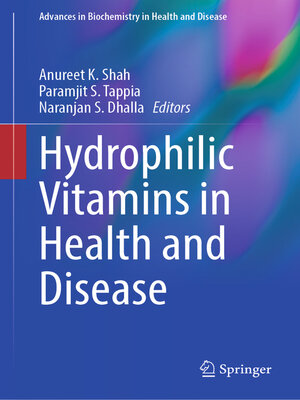Hydrophilic Vitamins in Health and Disease
ebook ∣ Advances in Biochemistry in Health and Disease
By Anureet K. Shah

Sign up to save your library
With an OverDrive account, you can save your favorite libraries for at-a-glance information about availability. Find out more about OverDrive accounts.
Find this title in Libby, the library reading app by OverDrive.



Search for a digital library with this title
Title found at these libraries:
| Library Name | Distance |
|---|---|
| Loading... |
More than 100 years ago, Dr Casimir Funk suggested the existence of a family of organic substances that are essential for life and thus introduced the concept of "vital amines" as essential nutrients with a specific action, requiring only minute amount with the power to cure a specific disease. Vitamins essential for human health are grouped according to whether they are soluble in water (hydrophilic) or in non-polar solvents (lipophilic). The hydrophilic vitamins are vitamin C and a series known as the vitamin B complex. Vitamin C is a reducing agent, whereas the vitamin B series are components of coenzymes. For example, riboflavin (vitamin B2) is a precursor of flavin adenine dinucleotide (FAD) and pantothenate (vitamin B5) is a component of coenzyme A. Indeed, several coenzymes contain a vitamin as part of their structure; this relation is undoubtedly responsible for creating an "essential" role for the vitamin. Since vitamins are involved in a wide range of biological processes and cell function, these are considered as essential nutrients. The essential nature of vitamins as well as their unique biochemistry, molecular mechanisms and cellular function in health and disease are emphasized in this book which will serve as a highly useful resource for health professionals, nutritional scientists, medical students, fellows, residents, and graduate students.







